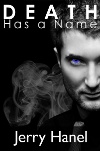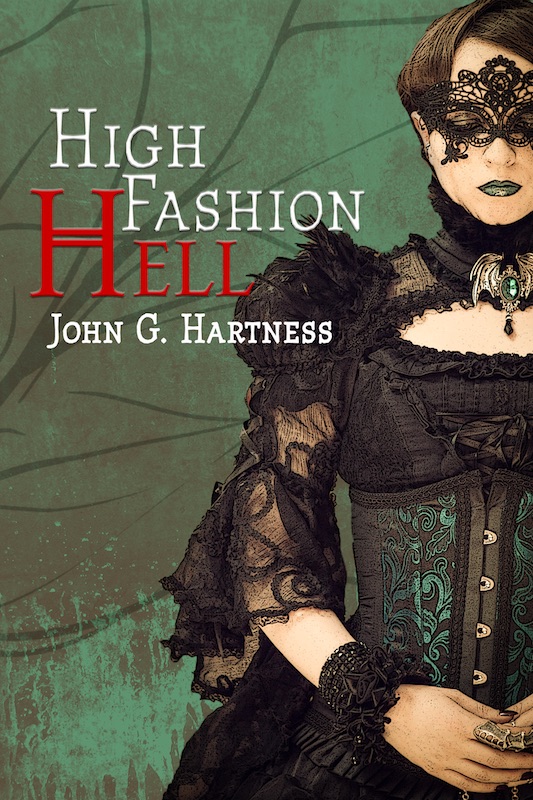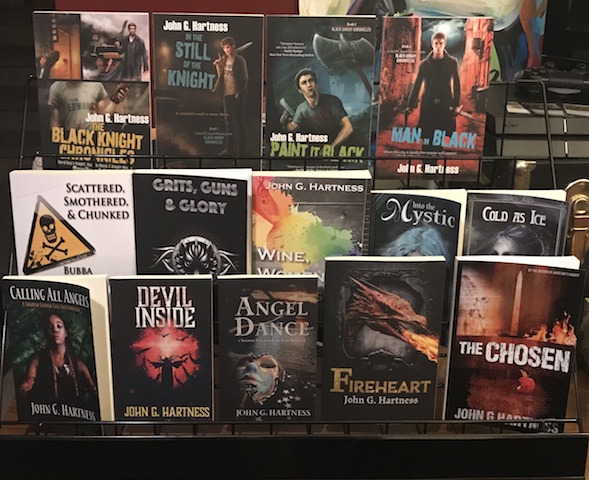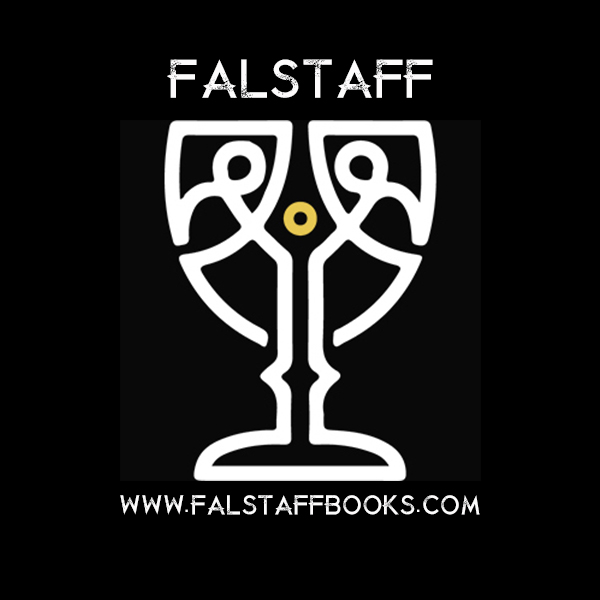Welcome to Insanity.
Welcome to the State of Insanity. Several people have asked about my books, and have wondered where the idea of Brodie came from. I thought I would take a minute to explain him, if you would indulge me. I believe that every character ever invented is — at some level — a reality of the author. Even the most vile villains exist deep in the core of the author, just expounded by a thousand-fold by the time they reach the paper.
For me, Brodie is a real part of who I am. He’s the shy introvert in me that would rather read a book than turn on the TV. He’s the kid in me who was bullied in grade school; that part deep inside that’s wounded and doesn’t want to come out. We all have that emotion deep inside of us, somewhere. Sure, we’ve shoved him back down so far that we’ve forgotten the pain, but he’s there. It’s a black hole that seems to attract all of our craziest thoughts of depression, anger, hate and loneliness.
In my first novel, Death Has a Name, my goal was to create a character that was actually insane. Certifiable, even. In fact, he had been institutionalized three times for his schizophrenia over the course of his life thus far.
Of course, I had to do research to determine what “insane” looked like. It can take on so many different forms, but the one common thread always seemed to be that the person in the midst of the event believes it — to the very core of his being — to be true. Which of course sent me down a very long, rhetorical, in-depth soul-search of “what is true?” Have you ever tried to answer that question? You should, but before you do, I would suggest taking the alcohol and other mind-altering substances out of your house. That is a question that can only be answered when looking through a very specific, well-focused lens. More on that lens in another post, maybe. That topic is so deep, that it may take five or six posts to even scratch the surface.
So, this damaged character needed a name, and I named him Brodie. John Wayne wasn’t named John Wayne when he was born. He was Marion Robert Morrison. Marion? Really? Several very smart people in charge of Marion’s career decided that Marion wasn’t “manly” enough for the roles he was to play. They knew that the name can really define the persona, so they chose John Wayne for his stage name. In that same light, but in the absolute reverse situation, I named my character Brodie. It’s an odd name, and — like Marion — it isn’t exactly the most strapping name I’ve ever heard. For this character, the name was a great fit for someone on the edge of reality and daily had his lunch money ripped from his shaking hands.
As I began writing the book, I realized that if I put the reader in Brodie’s head, then they, too, would be on the edge of reality. If that happened, the book would quickly spin out of control. After all, if you are in the head of someone who is insane, where is reality? Anything is true, and everything is in question. It would be like launching a jet plane, blacking out all the windows, and disabling the horizon device. No, Brodie needed someone to ground him and keep the reader pointed in the right direction. Enter Phil Dawson.
Phil is Brodie’s best friend. He is also the device I used to introduce the plot, and keep it moving on the straight-and-narrow. Brodie is the train, but Phil is the train tracks. Together, they make up one complete persona, and help the reader see the big picture. Phil can see only the case at hand, but Brodie can see only the paranormal manifestations. Through both sets of eyes, the reader can see everything.
In the end, the reader must discover whether or not Brodie is truly insane, or if he is just blighted with a curse that makes him appear to be insane. And that is the fun of the story. What if you could see things that other people swore didn’t exist? And what if these “non-existent” entities told you about things that have happened or have yet to happen? Would you be crazy? Or would everyone else in the world be deficient, leaving you as superior?
Brodie progresses a little from the first novel, and finds a love interest (something very foreign to him!) in the second novel, Thaloc Has a Body. But in the end, he’s still broken and fragile, and has to deal with The Truth that haunts his every move.
And that, my friends, was the thought process behind the creation of the mysterious Brodie Wade. I hope you’ve learned a bit about me as a person as you read Brodie’s story. It is, in fact, a hyperbole of that broken inner part of each of us. At least, that’s The Truth that I believe to the core of my being.
–Jerry








